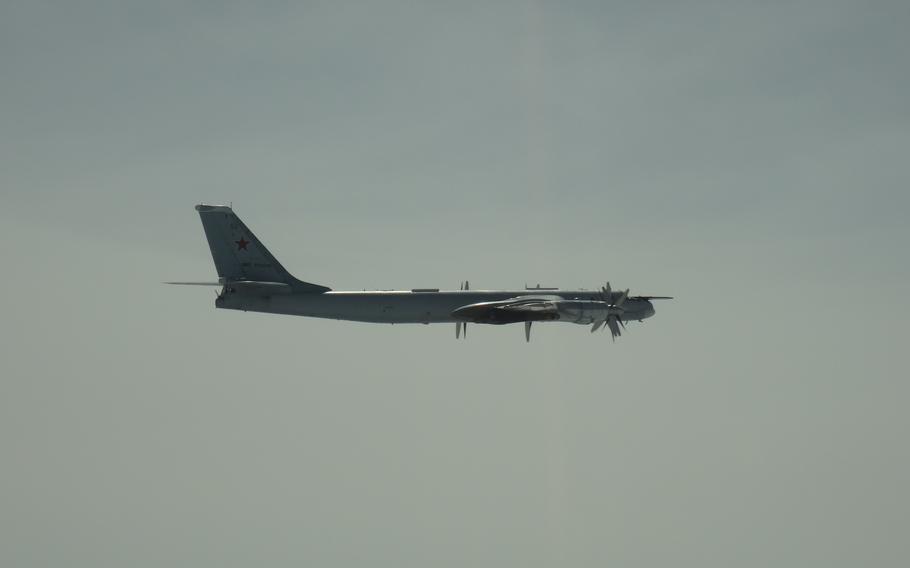
A Russian Tu-95 Bear pictured in June 2020. U.S. fighter jets on Monday, Oct. 17, 2022, intercepted two of the Russian bombers flying in international airspace off the coast of Alaska, U.S. military officials said. (North American Aerospace Defense Command)
The United States scrambled a pair of fighter jets Monday to intercept two Russian bombers flying in international airspace off the coast of Alaska, U.S. military officials said.
The U.S. Air Force F-16 fighter jets intercepted the Russian Tu-95 Bear-H bombers after they were “detected, tracked [and] positively identified” entering the Alaskan Air Defense Identification Zone by the North American Aerospace Defense Command. The intercept ended without incident and was not considered a threat or a military provocation, according to the statement issued Tuesday from NORAD, a joint U.S.-Canadian command charged with defending those nations’ airspace.
Air Force Brig. Gen. Pat Ryder, the Pentagon’s top spokesman, said the incident remained safe and professional and noted such interactions over international waters near Alaska occur regularly.
Ryder did not say precisely how far from U.S. airspace the Tu-95s flew nor how long the incident lasted.
NORAD said the Russian aircraft never came close to entering U.S. airspace, which extends 12 nautical miles from American shores. However, U.S. officials expect aircraft entering the Alaskan Air Defense Identification Zone — a stretch of mostly international airspace some 200 nautical miles off the Alaskan coast — to identify themselves in the interest of national security.
The command said it uses a combination of satellites, ground-based and airborne radars and fighter jets to monitor aircraft within the zone and was prepared to “employ a number of response options in defense of North America and Arctic sovereignty.”
The intercept Monday appeared to be the first interaction of U.S. and Russian aircraft near Alaska since last month. NORAD said it tracked two Russian maritime patrol aircraft on Sept. 11 flying in international airspace off Alaska’s coast. It reported three similar incidents in August.
The incident on Monday comes as U.S.-Russian relations remain tense over Russia’s illegal invasion of Ukraine, which began in February. The United States has supported Ukraine with billions of dollars in weapons and training for its troops since the Russian invasion. It has also hit Moscow and top Russian leaders with several rounds of sanctions in response to the attack.